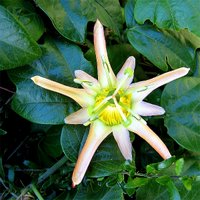*****
It has been a dreadful few days, and worse is forecast. Heat, relentless heat. Fortunately not much wind, (which could turn a heat wave into a potential fire-storm). So far, so good.
*****
Yesterday, Judy drove from Canberra in the afternoon, but the house was so hot we immediately went down Macquarie Pass. I had hoped to cool off walking along a beach near Shellharbour, but Judy wanted to eat, so we drove to Wollongong, and had a perfectly nice, and very cheap meal at one of the many Asian restaurants there. By the time we returned, the house had cooled down enough for us to get some sleep.*****
Then at first light this morning we spread insulation in the ceiling (there was nothing there before, except the "insulating blanket" directly under the "Colorbond" roof. Covered from head to toe, and with respirators as well, we tucked the "batts" in between the ceiling joists in fine style. Judy had a good idea of using long sticks to lift the "batts" into place, and poke them right out to the corners of the ceiling.*****
The Wingecarribee Shire Council deserves a kick up the bum for its policy of insisting that all houses (even on rural blocks) have non-reflective colours on roofs and external walls. Non-reflecting means heat absorbing, which is energy inefficiency built into the house specifications for me, by the Council. And yet they insist I reach a notional "energy standard". But their policy means I am behind the "8 Ball" to start with. It is bad policy, masquerading as "being sensitive to the needs of the community" (it is meant to minimise reflective glare on other houses). On rural blocks, such as mine, there are no houses within a "bulls roar" of my place, which have any view of my roof. As I said, it is bad policy.*****
Happy New Year everybody. My resolution is to wake up tomorrow morning without stomach pains. That is what happened to me last NYE, and it turned out to be the first signs of Cancer.
I am pleased to say I am well (not very fit), but happy. Just hot, that's all.



































